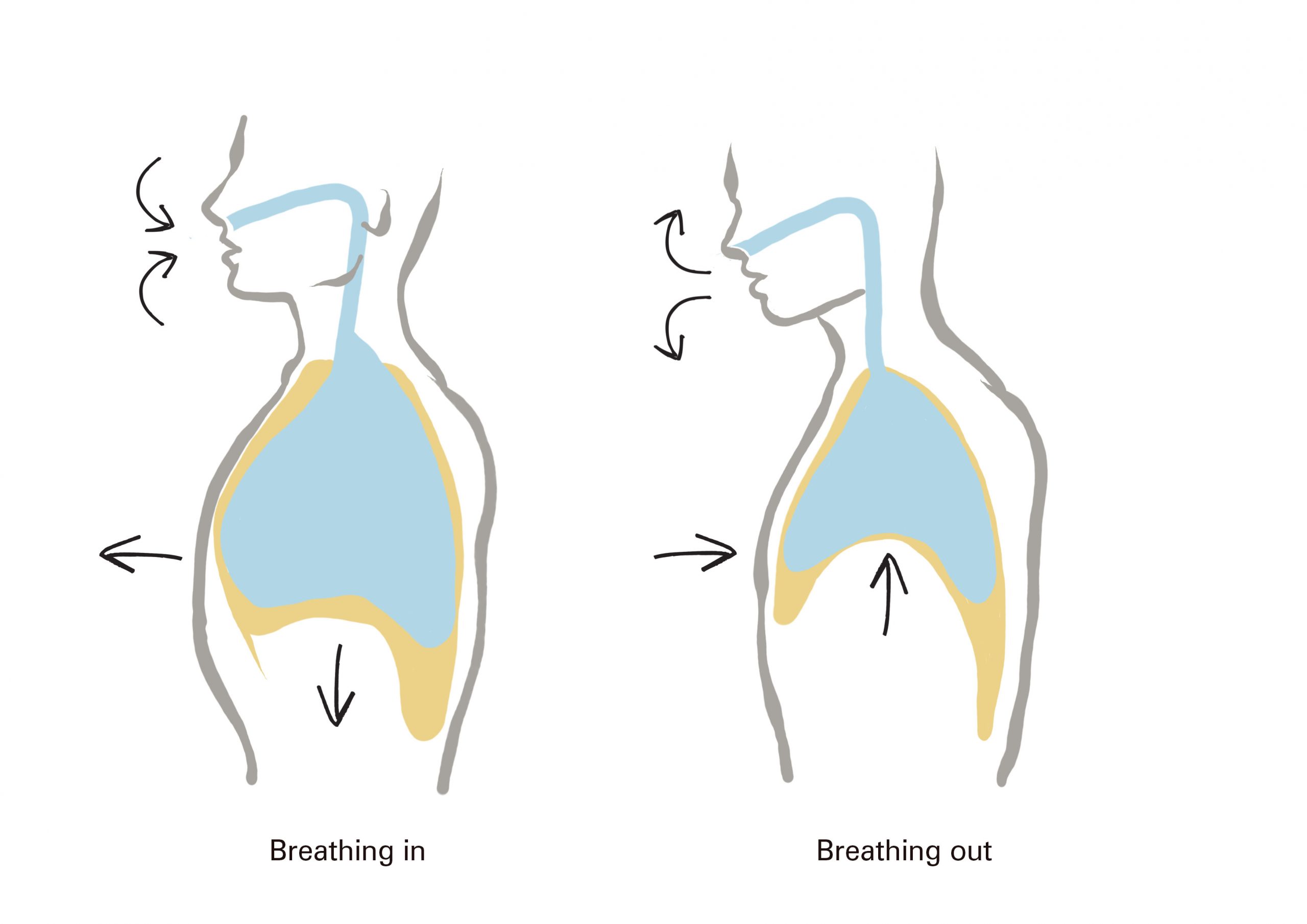Strange as it sounds, there is a right and a wrong way of breathing. Many people breathe in the wrong way for their whole lives, and don’t get any major problems. But if you already have an underlying condition, if you are in pain a lot of the time or if you have an illness affecting your lungs, the way that you breathe can have a big effect on the rest of your body.
By practicing these simple breathing techniques when you are feeling well, you will find it easier to use them if you are ill, and your lungs will be in a better position to deal with it.
How Covid-19 affects your breathing
As this virus attacks your lungs, your immune system goes into overdrive, causing excess secretions to be produced. This can make your lungs feel stiffer, reducing their ability to expand properly and limiting the amount of oxygen taken in.
If you are not breathing in as much oxygen as you need, and not breathing out enough carbon dioxide, your brain will make you breathe faster until the levels are back to where they should be. But if you aren’t breathing in the right way, it will occur more often. This can lead to you feeling very tired and short of breath, and tense and achy in your upper back and across your shoulders. It also makes pain, tension, or anxiety worse and harder to cope with.
If your diaphragm is tight and not working efficiently, you will end up overusing your accessory breathing muscles. These are muscles that are located around your chest and shoulders, and they shouldn’t normally be used much in breathing. So when they have to take over they will tighten up and cause pain and tension in your upper back and chest.
So how should you breathe?
The diaphragm and the intercostal muscles between your ribs are the main muscles that should be working when you breathe in. Your diaphragm is a dome-shaped muscle that attaches all the way around the bottom of your ribs, in front of your spine and across the center of your body. Your oesophagus (food pipe), aorta (large artery), and vena cava (large vein) pass through the muscle as it separates the top and bottom halves of your body.
When you contract your diaphragm it flattens, pulling your lungs down and pushing your abdominal contents out. This increases the volume of your lungs, decreasing the pressure and allowing air to be drawn in. That is why diaphragmatic breathing is sometimes called belly breathing.
Breathing out shouldn’t take any effort at all; by relaxing your diaphragm and belly, the volume of your lungs will decrease, increasing the pressure and pushing the air back out. But remember to give yourself time to empty your lungs, so that they are not full of stale air when you try to take the next breath in. One of the problems when people hyperventilate is that they are trying so hard to take the next breath that they don’t allow themselves to breathe out first.
How to slow your breathing down
As soon as you feel that you are breathing faster or using your shoulders more than your diaphragm for breathing in, focus on breathing properly until it settles down again.
An easy way to tell if you are doing diaphragmatic breathing is to gently place one hand on your belly, just below your ribs. As you take a breath in your hand should move up and out, sinking back down when you breathe out. Your shoulders shouldn’t be moving much at all when you do this—if they do, just soften them and try again. But simply trying to push your belly out isn’t going to work either, as your ribs should be swinging out at the same time. So focus on expanding your lungs, not your belly.
If you are in pain whenever you move, the natural response is to tense up and hold your breath. This makes the pain worse, and you will probably end up feeling very tense and stressed. So if you expect it to hurt, breathe in before you start moving and slowly blow the breath out with your movement. You may need to do this in several stages to get to where you need to be, but that’s OK. The main thing is focusing on breathing out and letting go of the muscles that don’t need to be working. Don’t take very deep breaths in each time though, or you may hyperventilate.
Practice every day
Even if you are feeling well, it is a good idea to practice taking some slow deep breaths several times a day. This will help you if your lungs do become stiff, as your body will already be used to breathing in the correct way. If you do become ill, try to do this deep breathing every hour.
Using your diaphragm, breathe in for a count of 5, hold for a couple of seconds and then gently breathe out for a count of 7. Repeat 3 times.
You won’t get it right all the time, as it takes practice to form the right habits and to retrain your muscles so you don’t have to think about what you are doing. Just give yourself a few minutes every day to focus on it, and your breathing will improve. It is a good idea to practice diaphragmatic breathing in different positions and situations so that it is a more realistic scenario. For example, waiting at the lights in the car, standing to do the washing up, or lying in bed.
